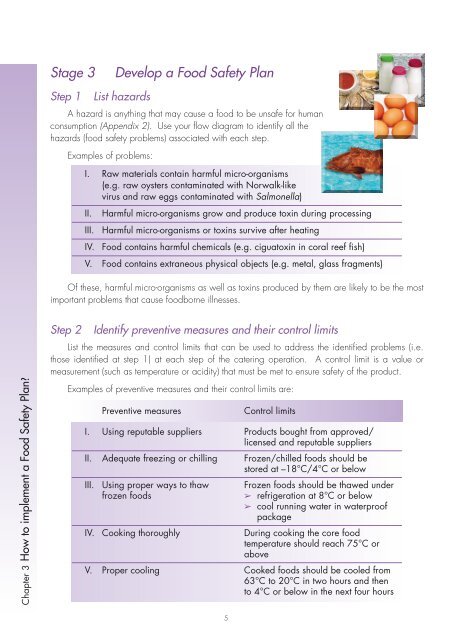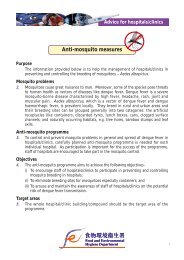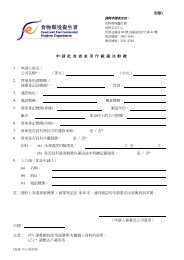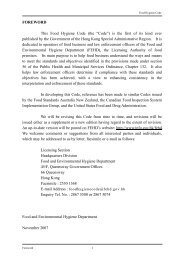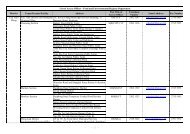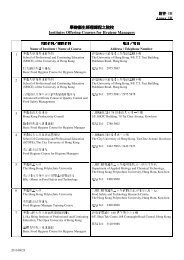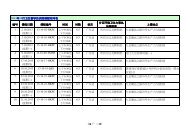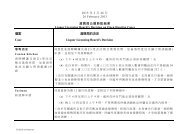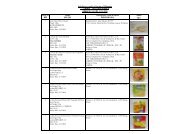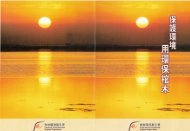Download the whole document (PDF file, 1311 KB)
Download the whole document (PDF file, 1311 KB)
Download the whole document (PDF file, 1311 KB)
Create successful ePaper yourself
Turn your PDF publications into a flip-book with our unique Google optimized e-Paper software.
Chapter 3 How to implement a Food Safety Plan?<br />
Stage 3 Develop a Food Safety Plan<br />
Step 1 List hazards<br />
A hazard is anything that may cause a food to be unsafe for human<br />
consumption (Appendix 2). Use your flow diagram to identify all <strong>the</strong><br />
hazards (food safety problems) associated with each step.<br />
Examples of problems:<br />
I. Raw materials contain harmful micro-organisms<br />
(e.g. raw oysters contaminated with Norwalk-like<br />
virus and raw eggs contaminated with Salmonella)<br />
II. Harmful micro-organisms grow and produce toxin during processing<br />
III. Harmful micro-organisms or toxins survive after heating<br />
IV. Food contains harmful chemicals (e.g. ciguatoxin in coral reef fish)<br />
V. Food contains extraneous physical objects (e.g. metal, glass fragments)<br />
Of <strong>the</strong>se, harmful micro-organisms as well as toxins produced by <strong>the</strong>m are likely to be <strong>the</strong> most<br />
important problems that cause foodborne illnesses.<br />
Step 2 Identify preventive measures and <strong>the</strong>ir control limits<br />
List <strong>the</strong> measures and control limits that can be used to address <strong>the</strong> identified problems (i.e.<br />
those identified at step 1) at each step of <strong>the</strong> catering operation. A control limit is a value or<br />
measurement (such as temperature or acidity) that must be met to ensure safety of <strong>the</strong> product.<br />
Examples of preventive measures and <strong>the</strong>ir control limits are:<br />
Preventive measures Control limits<br />
I. Using reputable suppliers Products bought from approved/<br />
licensed and reputable suppliers<br />
II. Adequate freezing or chilling Frozen/chilled foods should be<br />
stored at –18°C/4°C or below<br />
III. Using proper ways to thaw Frozen foods should be thawed under<br />
frozen foods ➢ refrigeration at 8°C or below<br />
➢ cool running water in waterproof<br />
package<br />
IV. Cooking thoroughly During cooking <strong>the</strong> core food<br />
temperature should reach 75°C or<br />
above<br />
V. Proper cooling Cooked foods should be cooled from<br />
63°C to 20°C in two hours and <strong>the</strong>n<br />
to 4°C or below in <strong>the</strong> next four hours<br />
5


